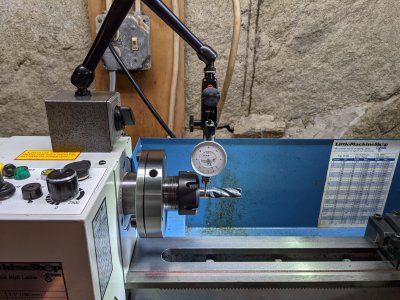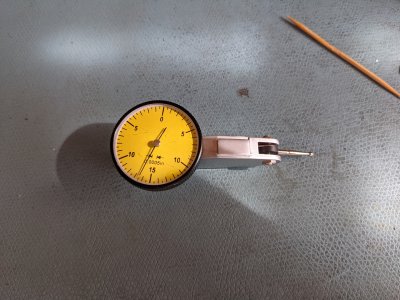Can you post a picture of how you are measuring the runout? What measuring device are you using? Where and how is it mounted? This can matter. What holds the collet in without a nut? My collet would fall out. Is the collet chuck clean and dry? The collet? The nut? No crud, no oil, no burrs, no chips.
I just tried a random 1/2" end mill in my 1/2" collet. Just to see what it would look like. With the collet nut tight I get +0.0007" to -0.0004".
If the collet nut is not tight - you are not testing the way a collet is used. So no matter how good that is (and it's probably a fluke) it doesn't count! A loose collet would slip and possibly ruin your work.
Here is my setup. Probably could measure it better, but this is how I did it. Didn't super clean anything, just pulled the end mill out of it's paper tube, put it in the collet, and tightened the nut using the nut wrench and a tommy bar. Made sure that the end mill was adequately pushed into the collet. You need over an inch inserted in the collet to get best performance.
It's not the lowest runout measurement that I have made with this chuck.
Some of my other collets in my set are better. You could have a bad collet. Still, 0.0011" TIR isn't bad. You need to measure TIR near the chuck, it is worse further away. Honestly, I don't even know if this is a good end mill or not. Or if the cut out for the Weldon shank matters.
View attachment 373104
Like you, I don't have any dowel pins to test either. Found a link for 4 units, 3" long by 0.5" OD dowel pins for ~ $11 on Amazon, so that is an option. They are spec'd between 0.0001-0.0005". McMaster-Carr has some better ones (naturally) but they are more expensive. They have 3/8 and 1/2 diameter 3" long dowel pins in 18-8 stainless spec'd at 0.0000-0.0002" for $4.09 and $6.24 each. If you buy one, get one the same size as your valve stem, so you are testing the exact collet you would be using. Collets can vary.
The nut still could be the problem, but without describing your measurement technique (in detail) or some good pictures, it's hard to rule everything else out. Hope this is helpful.



